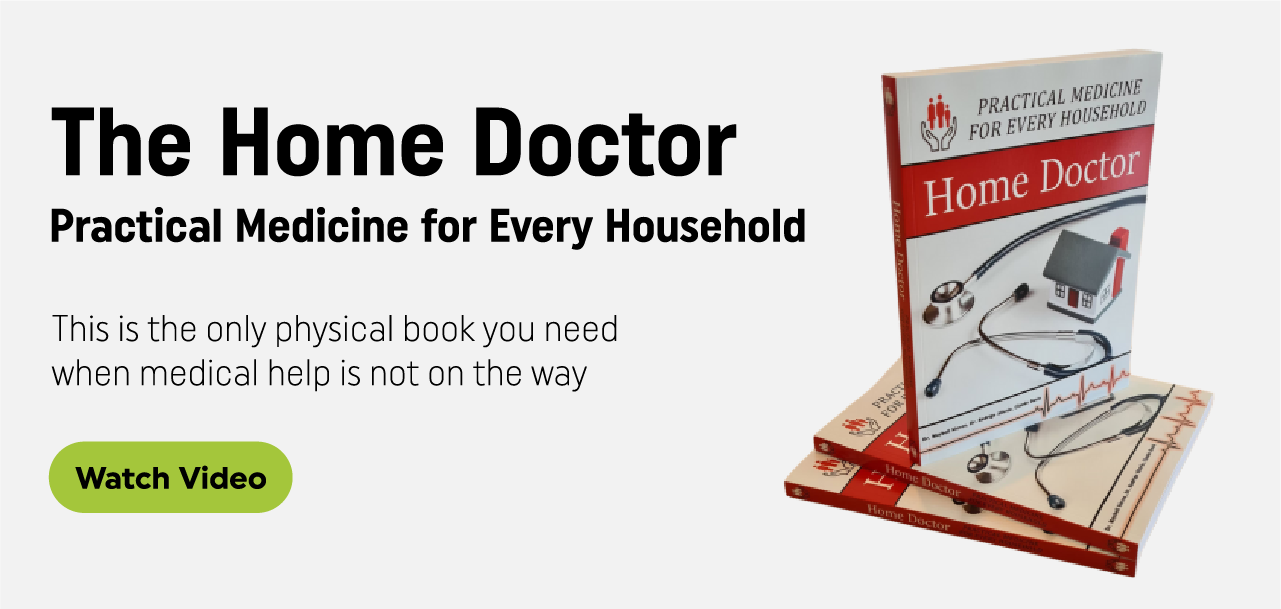Cervicogenic headaches, which originate from the neck, can cause discomfort and impact daily activities. However, there are various DIY solutions and natural remedies that can help alleviate these headaches right in the comfort of your own home. By incorporating simple self-care techniques and making lifestyle changes, you can effectively manage and find relief from cervicogenic headaches without relying solely on medication.
Key Takeaways:
- Understanding the underlying causes of cervicogenic headaches is crucial for effective management.
- Physical therapy exercises can help alleviate cervicogenic headaches by improving neck range of motion and strengthening the neck muscles.
- Preventive measures, such as maintaining good posture and proper lifting techniques, can help reduce the risk of developing cervicogenic headaches.
- Natural remedies, such as staying hydrated and using essential oils, can complement other treatment approaches for cervicogenic headaches.
- There is a close connection between neck pain and headaches, and addressing neck issues can help alleviate both symptoms.
Understanding Cervicogenic Headaches and Their Causes
Cervicogenic headaches occur when pain is referred from the upper cervical spine to the head. These headaches can be debilitating and affect one’s quality of life. It is crucial to understand the causes of cervicogenic headaches in order to effectively manage and treat them.
Poor posture is a significant factor that contributes to cervicogenic headaches. When the neck is not properly aligned, it puts strain on the cervical spine, leading to the development of headaches. Additionally, degenerative arthritis in the neck can cause inflammation and pain, triggering headaches.
Decreased muscle strength or length in the neck can also contribute to cervicogenic headaches. Weak neck muscles are unable to adequately support the head, leading to tension and discomfort. Repetitive head movements, such as those required in certain jobs or activities, can exacerbate these symptoms.
Occupations that involve prolonged sitting, heavy lifting, or repetitive head movements are also factors that can increase the risk of cervicogenic headaches. These activities put additional stress on the neck and upper cervical spine, leading to pain and discomfort.
Identifying the underlying causes of cervicogenic headaches is essential for effective management and treatment. By addressing these factors, individuals can reduce the frequency and intensity of their headaches, improving their overall quality of life.
With a better understanding of the causes of cervicogenic headaches, individuals can take proactive steps to prevent them and seek appropriate treatment when necessary. By incorporating proper posture, strengthening exercises, and making lifestyle modifications, individuals can find relief from cervicogenic headaches and improve their overall neck health.
Physical Therapy Exercises for Cervicogenic Headache Relief
Physical therapy exercises can be an effective way to reduce the frequency and intensity of cervicogenic headaches. These exercises focus on improving neck range of motion, correcting posture, and strengthening the deep neck flexor muscles. By addressing the underlying causes and imbalances in the neck and spine, physical therapy can provide lasting relief from cervicogenic headaches.
Here are some exercises commonly recommended by physical therapists for cervicogenic headache relief:
- Cervical retraction: Sit or stand with good posture. Slowly retract your head backward, as if trying to create a double chin. Hold for a few seconds and repeat.
- Deep neck flexor facilitation: Lie on your back with a towel rolled under your neck. Gently nod your head, activating the deep neck flexor muscles. Hold for a few seconds and repeat.
- Corrected posture holds: Sit or stand with good posture. Hold this corrected posture for as long as you can throughout the day to strengthen the muscles that support your neck.
- Doorway pectoralis major stretch: Stand in a doorway with your arms on the doorframe at shoulder height. Lean forward until you feel a stretch in your chest and shoulders. Hold for 30 seconds and repeat.
- Thoracic spine extensions: Sit on a foam roller or rolled-up towel. Place your hands behind your head and gently lean back over the roller, extending your upper back. Hold for a few seconds and repeat.
- Scapular squeezes: Sit or stand with good posture. Squeeze your shoulder blades together, as if trying to hold a pencil between them. Hold for a few seconds and repeat.
- Supine snow angels: Lie on your back with your arms by your sides. Slowly raise your arms overhead, keeping them in contact with the floor. Return to the starting position and repeat.
It is important to perform these exercises with proper form and under the guidance of a qualified physical therapist. Start with gentle movements and gradually increase intensity and duration as tolerated.
Regular practice of these physical therapy exercises can help improve neck muscle strength, flexibility, and posture, which in turn can reduce cervicogenic headache symptoms. Combine these exercises with other recommended treatments and lifestyle modifications for comprehensive cervicogenic headache relief.
Preventive Measures for Cervicogenic Headaches
To prevent future cervicogenic headaches, it is essential to make certain lifestyle changes and adopt proper habits. By taking proactive steps, you can minimize the occurrence of these headaches and improve your overall neck health. Here are some tips for preventing cervicogenic headaches:
Incorporate Full-Body Rotation
Instead of just rotating your neck, try incorporating full-body rotation exercises into your routine. This helps to improve the flexibility and mobility of your neck muscles, reducing the strain on your cervical spine.
Use a Lumbar Spine Roll for Proper Posture
When sitting at a desk or in a chair, use a lumbar spine roll to support your lower back and maintain good posture. This helps to reduce the strain on your neck and upper back, minimizing the risk of cervicogenic headaches.
Practice Proper Body Mechanics When Lifting
When lifting heavy objects, it is important to use proper body mechanics to avoid straining your neck and triggering headaches. Lift with your legs, keeping your back straight, and avoid twisting or jerking motions.
Keep Objects Close to Your Body While Lifting
To minimize the strain on your neck and upper back, keep objects close to your body when lifting. This helps to distribute the weight more evenly and reduces the risk of developing cervicogenic headaches.
Avoid Soft Couches or Chairs That Encourage Poor Posture
Soft couches or chairs that do not provide adequate support can contribute to poor posture and increase the risk of cervicogenic headaches. Opt for furniture that offers proper back support and encourages good posture.
Maintain a Neutral Neck Position While Sleeping
When sleeping, it is crucial to maintain a neutral neck position to prevent unnecessary strain on your cervical spine. Choose a pillow that supports the natural curve of your neck and avoid sleeping on your stomach, which can strain your neck muscles.
By implementing these preventive measures, you can significantly reduce the risk of developing cervicogenic headaches and promote better neck health. It is important to remember that consistency is key, so make these habits a part of your daily routine to effectively prevent and manage cervicogenic headaches.
Natural Remedies for Cervicogenic Headache Relief
In addition to physical therapy exercises, there are several natural remedies and self-care techniques that can provide relief from cervicogenic headaches. These remedies are simple yet effective ways to manage the pain and discomfort associated with this type of headache. By incorporating these natural treatments into your daily routine, you can find relief from cervicogenic headaches and improve your overall well-being.
1. Stay Hydrated
Dehydration headaches can worsen cervicogenic headaches. Drink plenty of water throughout the day to stay hydrated and help prevent these headaches from occurring. Avoid excessive caffeine and alcohol, which can contribute to dehydration.
2. Take Magnesium Supplements
Magnesium plays a crucial role in regulating nerve and muscle function, and a deficiency in this mineral can contribute to headaches. Taking magnesium supplements may help reduce the frequency and severity of cervicogenic headaches.
3. Limit Alcohol Consumption
Alcohol can trigger migraines and exacerbate cervicogenic headaches. To prevent these headaches, limit your alcohol consumption or avoid it altogether if possible.
4. Get Adequate Sleep
Sleep deprivation can contribute to headaches and neck pain. Make sure you get enough quality sleep each night to help prevent cervicogenic headaches. Establish a regular sleep schedule and create a relaxing bedtime routine.
5. Avoid Histamine-Rich Foods
Some foods high in histamine can trigger migraines and worsen cervicogenic headaches in some individuals. It may be beneficial to avoid foods such as aged cheeses, fermented products, cured meats, and certain fruits and vegetables that are high in histamine.
6. Use Essential Oils
Essential oils like peppermint and lavender have soothing properties that can provide headache relief. Apply a few drops of these oils to your temples or use a diffuser to create a calming environment.
7. Consider B-Complex Vitamins
B-complex vitamins, including vitamin B2 (riboflavin), B3 (niacin), and B6 (pyridoxine), have been shown to have a preventive effect on migraines. Discuss with your healthcare provider about adding these supplements to your routine.
8. Apply Cold Compresses
A cold compress can help reduce headache pain. Apply a cold pack or a bag of frozen vegetables wrapped in a towel to the back of your neck or forehead to alleviate the discomfort associated with cervicogenic headaches.
These natural remedies can complement other treatment approaches and provide additional relief from cervicogenic headaches. Incorporate them into your daily routine and listen to your body to find out what works best for you.

Link Between Neck Pain and Headaches
Neck pain and headaches often share a close relationship, with neck pain frequently serving as a cause of headaches. When the neck muscles are strained, injured, or tense, it can lead to the development of headaches. Poor posture, which places additional stress on the neck, can also contribute to headaches. Understanding the connection between neck pain and headaches is crucial in effectively addressing and treating these symptoms.
By addressing the underlying causes of neck pain and implementing appropriate remedies, it is possible to find relief from both neck pain and headaches. Proper posture, regular stretching and strengthening exercises for the neck and upper back, and applying heat or cold therapy to the affected area can help alleviate neck pain and subsequently reduce the occurrence of headaches.
It is essential to take a holistic approach to address the link between neck pain and headaches. By focusing on improving neck health and addressing the root causes of neck pain, individuals can experience significant relief from both neck pain and headaches.
The Role of Stress and Muscle Tension
In addition to poor posture and muscle strain, stress and muscle tension can also contribute to the relationship between neck pain and headaches. When we experience stress, we tend to hold tension in our neck and shoulders, causing muscle stiffness and discomfort. This tension can radiate upwards and trigger headaches.
By incorporating stress management techniques such as deep breathing exercises, meditation, and regular physical activity, individuals can reduce muscle tension and alleviate the associated neck pain and headaches. Seeking the guidance of a healthcare professional or a physical therapist can also provide valuable insight and personalized strategies for managing stress and reducing muscle tension.
The Importance of Seeking Professional Help
While self-care measures can often provide relief from neck pain and headaches, it is important to seek professional help if the symptoms persist or worsen. A healthcare provider or a physical therapist can conduct a thorough evaluation, assess any underlying conditions, and recommend appropriate treatment options.
If your neck pain and headaches are accompanied by other concerning symptoms such as dizziness, vision changes, or difficulty speaking, it is essential to seek immediate medical attention, as these may indicate a more serious underlying issue.

| Neck Pain and Headaches | Causes | Management Strategies |
|---|---|---|
| Strained and injured neck muscles | Poor posture | Regular stretching and strengthening exercises for the neck and upper back |
| Tense neck muscles | Stress and muscle tension | Stress management techniques, such as deep breathing exercises and meditation |
| Applying heat or cold therapy to the affected area |
Tips for Relieving Headaches Caused by Neck Pain
When experiencing headaches caused by neck pain, it’s important to have self-care techniques in place to help provide relief. By incorporating these techniques into your daily routine, you can alleviate the symptoms of headaches and improve your overall well-being.
Improve Workplace Ergonomics
One of the main causes of neck pain-related headaches is poor ergonomics at work. Ensure your workstation is properly set up, with your computer monitor at eye level, your chair supporting your lower back, and your keyboard and mouse positioned comfortably within reach. Taking regular breaks to stretch and move around can also help relieve tension in your neck and prevent headaches.
Maintain Good Posture
Keeping your spine properly aligned throughout the day is essential for reducing neck pain and the associated headaches. Be mindful of your posture, both when sitting and standing. Avoid slouching or hunching over, and instead, aim to keep your shoulders back and your neck aligned with your spine. Incorporating exercises that strengthen your core and back muscles can also help improve your posture.
Improve Sleep Quality
Poor sleep posture and an uncomfortable sleeping surface can contribute to neck pain and headaches. Invest in a supportive pillow that aligns your neck and spine properly while sleeping. Consider using a contoured pillow specifically designed for neck support. Additionally, try different sleeping positions to find the one that feels most comfortable and doesn’t strain your neck. Adequate restful sleep will promote overall relaxation and help alleviate headaches caused by neck pain.
Apply Heat or Cold Therapy
Applying heat or cold therapy to the neck and head can provide temporary relief from headaches caused by neck pain. Use a hot towel, heating pad, or warm compress to relax tense muscles and improve blood circulation. Alternatively, apply a cold compress or ice pack to help reduce inflammation and numb the area. Experiment with both heat and cold therapy to find which one works best for you.
Try Relaxation Techniques
Stress and tension can exacerbate headaches caused by neck pain. Explore relaxation techniques such as deep breathing exercises, meditation, or yoga to help reduce stress levels and promote muscle relaxation. Taking breaks throughout the day to engage in these techniques can help prevent the buildup of tension in your neck and alleviate headaches.
Consider Over-the-Counter Pain Relievers
In some cases, over-the-counter pain relievers can provide temporary relief from headaches caused by neck pain. Nonsteroidal anti-inflammatory drugs (NSAIDs) like ibuprofen or aspirin can help reduce pain and inflammation in the muscles and joints of the neck. However, it’s important to consult with a healthcare professional to ensure the safe and appropriate use of these medications.
Seek Professional Medical Attention
If your headaches persist or worsen despite self-care efforts, it’s crucial to seek professional medical attention. A healthcare professional can evaluate your symptoms, diagnose any underlying conditions, and recommend appropriate treatment options. They may suggest physical therapy, chiropractic care, or other interventions to address the root cause of your neck pain-related headaches.
By implementing these tips for relieving headaches caused by neck pain, you can effectively manage your symptoms and improve your quality of life. Remember to be consistent with your self-care routine and prioritize your well-being.
Conclusion
Cervicogenic headaches can be effectively managed and alleviated through a combination of DIY solutions and natural remedies at home. By incorporating physical therapy exercises, preventive measures, and natural remedies, individuals can find relief from cervicogenic headaches and improve their overall quality of life.
It is important to note that if cervicogenic headaches persist or worsen, seeking professional medical advice is essential. This is particularly crucial as there may be underlying conditions that require further treatment.
With proper care and attention, cervicogenic headaches can be successfully treated and prevented, allowing individuals to experience long-lasting relief. By implementing these strategies and taking proactive steps towards managing cervicogenic headaches, individuals can regain control over their headache symptoms and enjoy a better quality of life.


